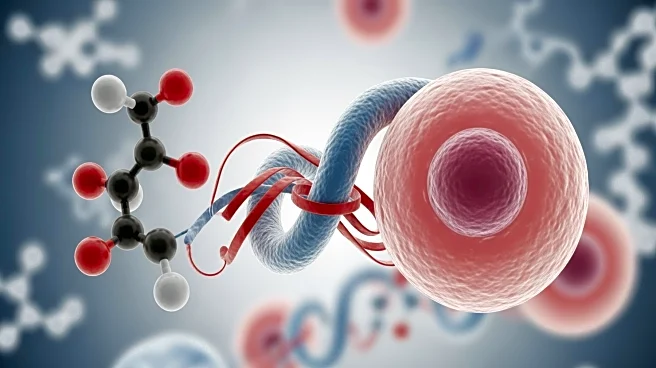What's Happening?
A groundbreaking discovery has emerged from six decades of research on fat metabolism, revealing that a key enzyme, previously thought to solely break down stored fat, also plays a crucial role within the nucleus of fat cells. This enzyme, known as hormone-sensitive
lipase (HSL), has been identified as a significant factor in regulating energy within the body. Traditionally, HSL was understood to release energy from fat, but recent studies involving mice and humans with HSL gene mutations have shown that the absence of this enzyme leads to a decrease in fat tissue, a condition known as lipodystrophy. This finding contradicts the long-standing belief that the lack of HSL would result in fat accumulation. The research, led by Professor Dominique Langin at the University of Toulouse, highlights that HSL is not only present on the surface of lipid droplets but also within the nucleus of adipocytes, where it interacts with other proteins to maintain healthy adipose tissue.
Why It's Important?
This discovery has significant implications for understanding metabolic diseases such as obesity and its related complications. Obesity, which affects a substantial portion of the global population, is linked to increased risks of diabetes, heart disease, and reduced quality of life. The new role of HSL in the nucleus of fat cells provides insights into the mechanisms of fat regulation and opens potential avenues for developing more effective treatments for obesity and metabolic disorders. By understanding how HSL functions within the nucleus, researchers can explore new strategies to maintain healthy adipose tissue and improve metabolic health. This could lead to advancements in preventing and managing obesity, ultimately benefiting millions of individuals worldwide.
What's Next?
The research team plans to further investigate the regulatory mechanisms of HSL within the nucleus and its interactions with other proteins. Understanding these processes could lead to the development of targeted therapies aimed at enhancing the function of adipocytes and improving metabolic health. Additionally, the study's findings may prompt further exploration into the genetic factors influencing HSL activity and their impact on obesity and related conditions. As the scientific community continues to unravel the complexities of fat metabolism, these insights could pave the way for innovative approaches to combat obesity and its associated health challenges.
Beyond the Headlines
The discovery of HSL's role in the nucleus of fat cells challenges the traditional view of fat metabolism and highlights the complexity of adipocyte function. This finding underscores the importance of considering the multifaceted roles of enzymes and proteins in cellular processes. It also raises questions about the potential for other enzymes to have previously unrecognized functions within cells. As researchers delve deeper into the molecular biology of fat cells, they may uncover additional pathways and mechanisms that contribute to energy regulation and metabolic health. This could lead to a paradigm shift in how scientists approach the study of obesity and related diseases.
















